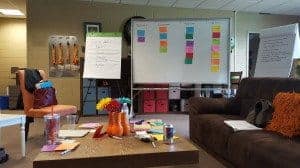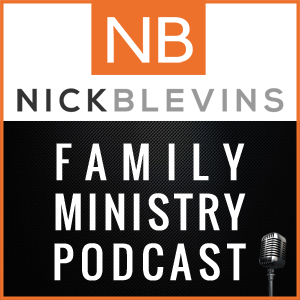 Last week I did some consulting/speaking with Browncroft Community Church in Rochester, NY. I met with the family ministry staff during the day and spoke to their volunteer small group leaders for elementary and student ministry that night. Their family ministry team has recently realigned around an integrated family ministry model and they are leading their volunteers to become even more lead small in their approach.
Last week I did some consulting/speaking with Browncroft Community Church in Rochester, NY. I met with the family ministry staff during the day and spoke to their volunteer small group leaders for elementary and student ministry that night. Their family ministry team has recently realigned around an integrated family ministry model and they are leading their volunteers to become even more lead small in their approach.
I had a great time with their staff and volunteers and here are 5 things I learned, or was reminded of, during my visit.
An Integrated Family Ministry Starts With Staff
This is not new or shocking, but for any church looking to transition from a separate (or even silo) model of ministry to an integrated model, it all starts with staff. The staff team must be organized with a point leader in charge of the entire family ministry. If our staff is not unified, we cannot expect our ministries to be unified. The Browncroft team members had unique gifts and passions, but a unified goal.
A Strengths-based Staffing Model May Be The Right Fit
Browncroft re-organized their family ministry staff around a strengths-based model where some roles work across all age groups. More than having roles work across age groups, their goal is to have people serve within their strengths. That might be leading large group experiences, small group leaders, or events. As a church gets closer to 2000 in size it can begin to make roles more specialized as their team has done.
A Complete Dedication To Lead Small Affects Everything
Lead small is about making small groups the foundation of your entire ministry. Browncroft has been moving this direction for a few years and they continue to build on it each year. If small groups really are where you want every kid and student to be, then you have to staff for it, structure for it, resource for it, and train volunteers for it.
Every Volunteer Wants To Have The Greatest Possible Impact
During the volunteer training that night we talked about Phases and how to Lead Small well as a small group leader. I enjoyed meeting many of the leaders at Browncroft and hearing about their heart for kids and students. The reality is that leading small is more difficult, but it's also more fruitful and every volunteer wants to maximize their impact.
Share The Why
Any time we communicate something important we should start with why (here's a great book on the topic). The staff and I spent a good portion of our time during the day talking about why.
Why does Browncroft family ministry exist?
Why am I passionate about this problem we want to solve?
Why do we do what we do?
During the volunteer training I got to hear volunteers talk about why they serve. We will always have a lot to say about what we do and how we do it, but we can never forget the why. What and how engage the mind, but why engages the heart.
Those are 5 things I learned from my time with the Browncroft team. I'm grateful for their ministry and the impact they are having in Rochester.





